Our Vision
The extensive Catalog of the Chogyam Trungpa Digital Library includes recordings of more than 1,500 public teachings given by Chogyam Trungpa between 1969 and 1986. These recordings, which will be released in the Library over time, document how Chogyam Trungpa introduced and planted the living Buddhist tradition and practice of meditation in North America.
Trungpa Rinpoche always emphasized how Buddhism was relevant to people’s professional and personal lives, and held a deep conviction that the dharma needs to be alive and fresh in every instant. In that spirit, he didn’t limit his teachings to formal talks and programs alone, but also conducted individual and group audiences with students, meetings with Naropa Institute faculty, poets, and artists, and held discussions with administrators, business people, caregivers to the elderly, and therapists. He spoke with children and teachers; conducted ceremonies such as weddings, funerals, empowerments and vow ceremonies; organized business conferences; and engaged with students in many other ways. In providing access to this diverse material, the Chogyam Trungpa Digital Library seeks to share with our audience the unique experience of being there in the moment with him.
The Chogyam Trungpa Digital Library is a project of the Chogyam Trungpa Institute based at Naropa University. The Digital Library offers primary source material which may be particularly relevant for Naropa’s faculty, staff, students, alumnix and a broader community of educators.
Our fundamental vision is to greatly increase access to Trungpa Rinpoche’s teachings. We aspire to reach a wider audience than ever before, keep releasing more and more of his large body of work, make the teachings themselves more accessible with high-quality transcripts and captions, and share the experience of hearing the teachings how he taught them.
Our Origins
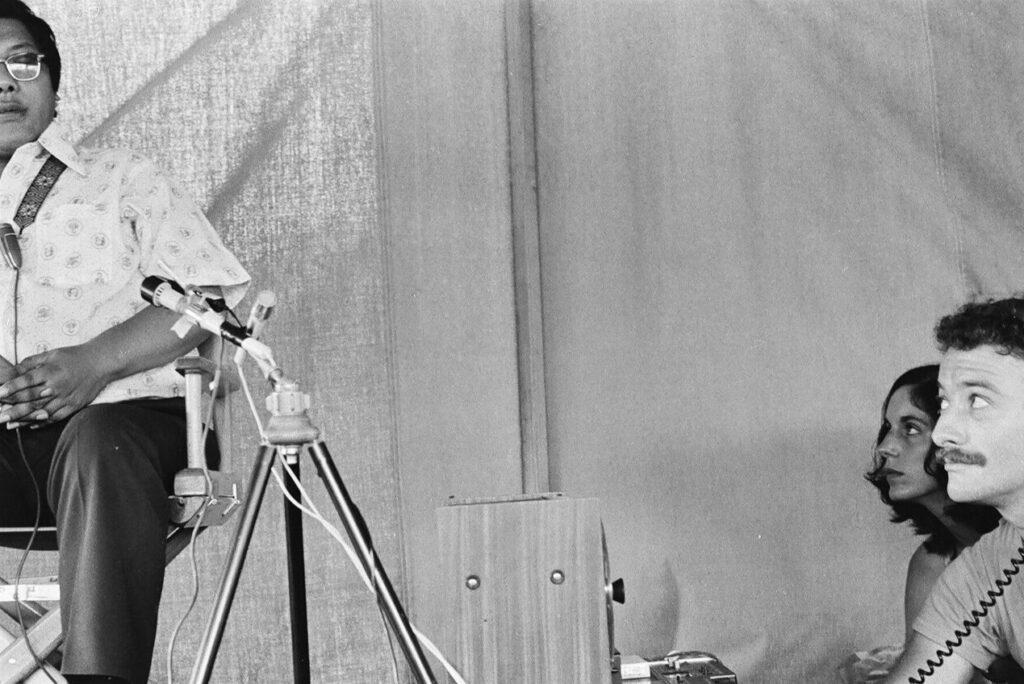
Soon after arriving in North America in 1970, Chogyam Trungpa asked his students to record all of his lectures and other teachings. The Chogyam Trungpa Digital Library is thus a culmination of decades of work to record, organize, digitize, and make available the dharma teachings of Chogyam Trungpa. From the time of his arrival until his death, high quality analog audio recordings were made, and a number of his teachings were also captured in video recordings. The sound recordists and videographers were a dedicated and talented group. As well, his students devoted energy and care to creating excellent transcripts of many recordings, using the technology available at the time – typewriter, pen and paper.
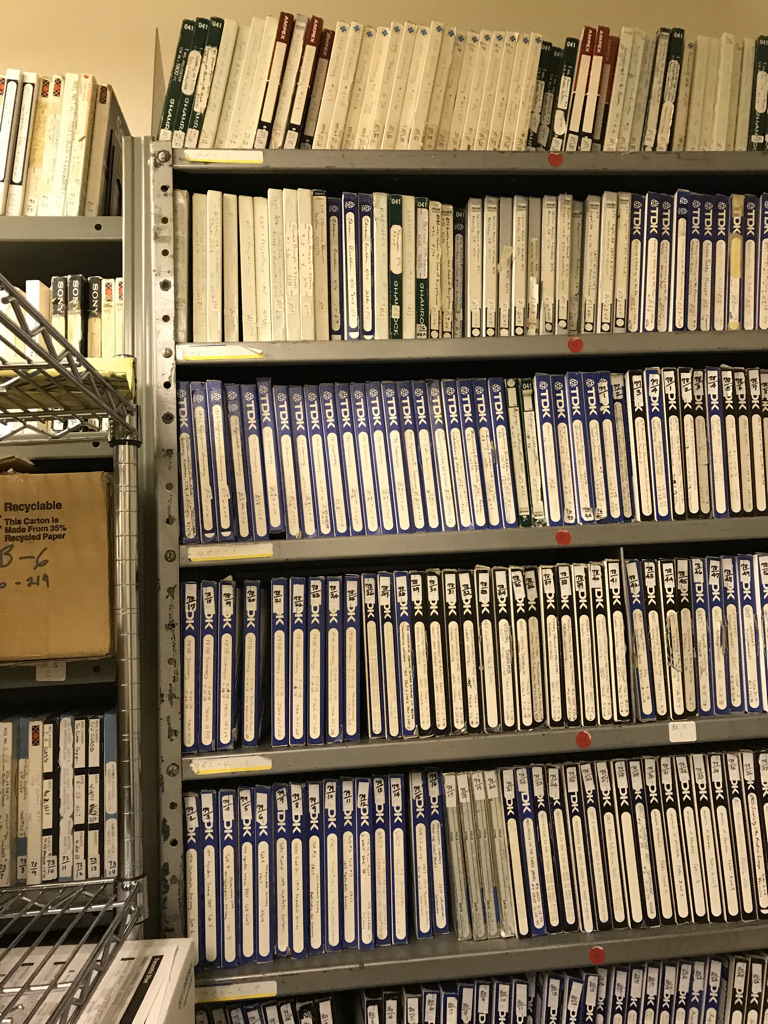
Following Chogyam Trungpa’s death in 1987, the recordings and transcripts were moved to the newly formed Shambhala Archives (originally the Vajradhatu Archives) where additional efforts were instituted to catalog, copy, digitize, describe, and transcribe these teachings. The first collection database was built by the Shambhala Archives in the 1990’s.
The material contained in these recordings has been the basis of more than 100 print publications. Yet only about 30% these recordings have ever been published in written form. Some have been previously made available as DVDs or audio CDs, through the efforts of the Shambhala Archives, but most have remained untranscribed and were not listened to for decades until the Digital Library appeared.
The Digital Library
Over time, within the archival and museum communities, the creation of digital libraries matured in concept and in execution. Access to digital media became easier and more sophisticated, as well as less expensive. It became possible to envision ways to provide more widespread access to these teachings.
In 2011, before the Digital Library project began, a feasibility and implementation study looked at creating online access to the dharma teachings of Chogyam Trungpa. The primary stated goal of the project would be, “To design, develop, implement and maintain the online library to make available the original teachings of Chögyam Trungpa Rinpoche, in audio, transcript and video formats, along with photographs and other supporting documents.”
In 2016, during a workshop at Naropa University to begin training a new generation of transcribers and editors of Chogyam Trungpa’s work, plans emerged for the creation of a digital library. In the following year, the creation of the Chogyam Trungpa Institute (CTI) at Naropa University was announced. The funding procured allowed CTI to inaugurate a transcription project, which is described in detail below.
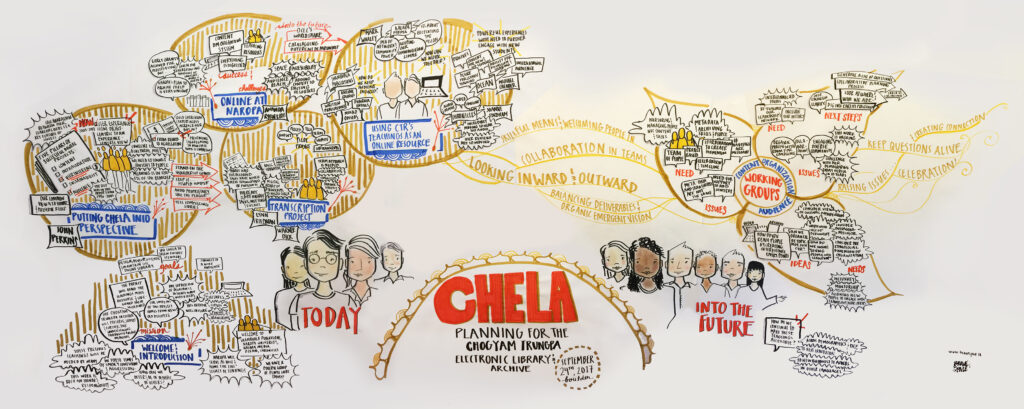
Within two years, work began on the modelling, design, and building of an updated, comprehensive database. The team also began to research who our audiences would be and what uses of the library that they might make. As the Transcription Project continued, we expanded our content management systems to support the Library’s goal of making these digital recordings widely available.
In late 2021, the decision was made to launch the Chogyam Trungpa Digital Library, with its first release to take place within a year to 18 months. The team evaluated several platforms for the presentation of the audio and video material, finally settling on the technology provided by AVP/Aviary to present the media and linked transcripts in a very interactive and audience friendly way. We also started planning a public-facing website to provide additional contextual information, enable the discovery of rich interconnections, and facilitate the telling of interesting stories. We selected Vermilion Design and Digital to design the website and build our first release.
The Transcription Project
Audio and video recordings are difficult to search and index, presenting significant challenges to archivists and library users. A modern digital archive of recordings benefits greatly from the inclusion of accurate digital transcripts. The transcription of the audio and video recordings effectively “unlocks” the content, making the material highly indexable and searchable.
In 2018, when the Transcription Project began, only 50% of the recordings of Chogyam Trungpa’s teachings had ever been transcribed, and the vast majority of those existing transcripts were in hand-written or typed form.
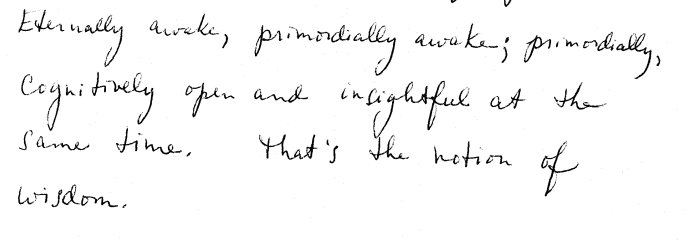



The Transcript Project was launched to complete the transcription of all recordings and to upgrade all existing paper transcripts to digital formats. This propitiously occurred when technology was evolving to allow transcripts to be synchronized with audio and video media, providing interactive transcripts and facilitating captioning. With this technology, the vitality of Trungpa Rinpoche’s teachings could be directly experienced, combined with the ease of understanding exactly what he was saying.
The Transcription Project began with a one-year Pilot Project in 2018. A small team completed this study, focusing on tools and procedures to allow the project to be scaled-up to a cloud-based, collaborative, multi-year effort. The pilot also determined that machine-based and automatic transcription were not useful for our project.
In 2019, we gathered a small team with both strong experience in editing and an understanding of dharma, who work from locations around the globe. The team follows a multi-step process that is centrally coordinated using cloud-based tools. In an interesting auspicious coincidence, the project and team structure were well-designed to thrive during the pandemic lockdowns!
Transcription Workflow
Each transcript passes through many hands, and the following steps, to produce an archival-quality verbatim record of each event:
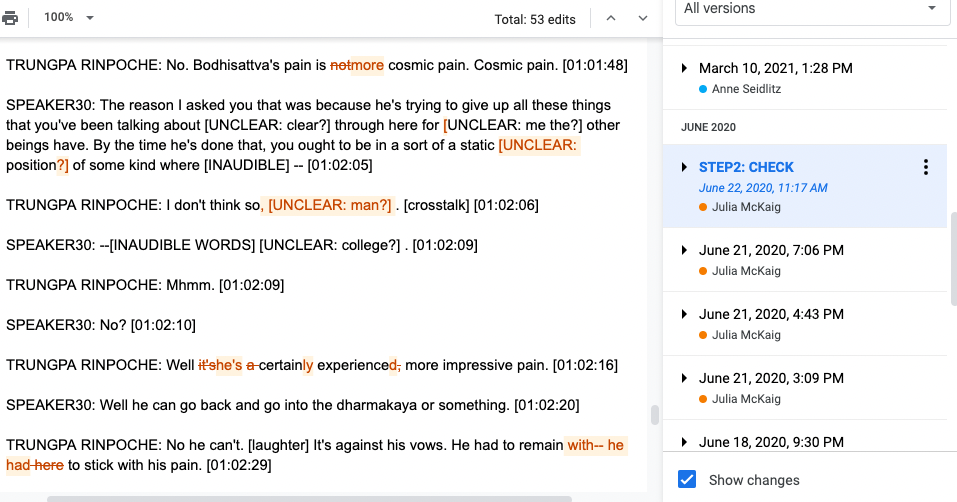
- Initial Transcription – Most initial transcription is done from scratch, directly from the recording. If an earlier paper transcript is available (less than half the time), it is first re-typed in digital form and then reviewed for accuracy.
- Checking – Members of the team check each other’s initial transcripts for accuracy against the recording.
- Final Proof – Senior transcribers review the transcript for punctuation, paragraphing, and sentence structure. No changes, however, are made to the original spoken words.
- Terminology Review – Foreign language and specialized terms are identified, defined, and spelled consistently using the team’s internal glossary that has grown to 2,000 entries.
Audio & Video Preparation
Our digital audio and video recordings are based on the digital assets from the Shambhala Archives. These arose from audio and video recovery and digitization projects initiated in the 1990s and early 2000s. To prepare these original media files for presentation in the library, we have done the following:
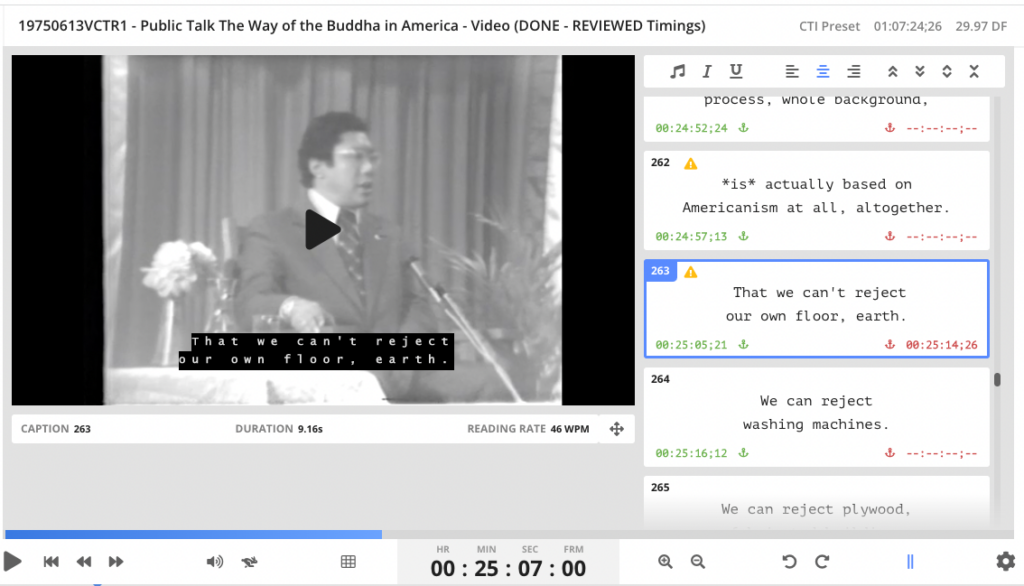
- Audio Enhancement: Using conventional noise-reduction techniques, and “adaptive leveling”, we have improved the recordings, particularly to make questions from the audience more discernible. This was initially done to enhance the quality of the recordings for our transcribers. It is now enhancing the listening experience for our online audience.
- Video Editing: Some video recordings were previously edited for DVD publications or other forms of access. For videos that were digitized, but never edited for presentation, we have edited separate segments of video from an event — without compromising the archival originals — into a single file, and we have made minor improvements to image quality.
- Slates: For both audio and video, we have added consistent “slates” at the beginning for identification purposes.
- Streamable Versions: For both audio and video, from the full-resolution archival versions, we have created streamable versions optimized for viewing and listening on the web.
- Captioning: We use digital tools to add precise time codes to the transcripts
Data Preparation
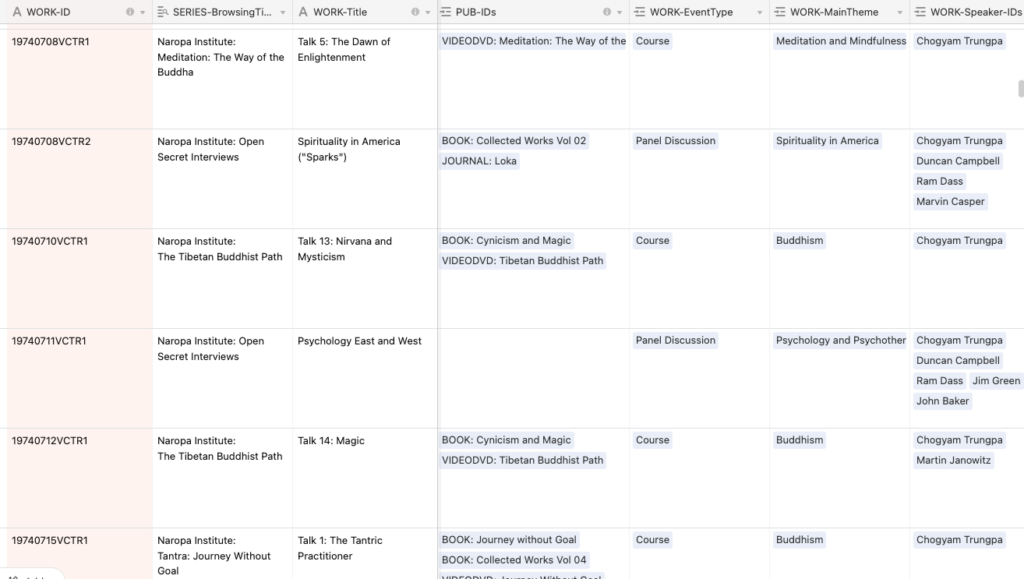
Once a recording is finalized and the transcription is complete, we are able to add additional “metadata” to provide a richer search experience:
- Cataloging: Once the talk is transcribed, the cataloging information can be completed in our database.
- Summarizing: Senior transcribers produce summaries of the talks.
- Tagging: Subject matter experts assign keyword and subject tags.
- Speaker Identification: Questioners and other speakers in the audience are identified if possible
- Publication Info: Links are added to publications and reader’s guides
Releasing to the Digital Library
The final step in the process is to upload the audio, video, transcript, captions and descriptive metadata to Aviary, our media platform. From there, it is now available to our users to watch, hear, read, study, and contemplate.
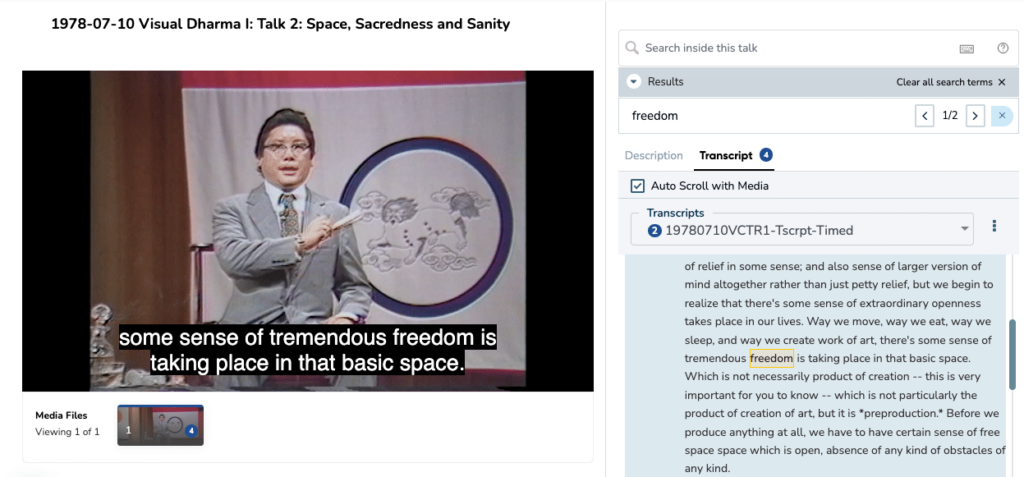
The Future of the Digital Library
In less than five years, working with limited staff and resources, we have produced excellent verbatim transcripts for about half of our collection. We have developed a consistent, repeatable, well-documented process for this work. For our first release, we have matched the transcripts with enhanced audio and video recordings from events at Naropa University, which show the diversity and depth of Chogyam Trungpa’s teachings. We are offering an excellent viewing experience, and powerful tools for exploring, searching, and browsing the collection. We are now well positioned to scale up all of these processes.
As we move forward, we will complete transcribing and providing access to the remaining 1,350 recordings in the library. We will be releasing new material on a regular basis. With your support, we can accelerate the pace of transcribing and releasing teachings to the library, so that we can offer comprehensive access to everything within our collection in a timely manner.
Additionally we hope to:
- expand technical and curatorial efforts to encourage discovery of fresh and unexpected aspects and interrelationships within the content.
- expand the core audio/visual collection to include other media.
- advance the core mission of the Chogyam Trungpa Institute, which is to support and further the preservation and understanding of Chogyam Trungpa’s teachings in all their forms, including through the following:
- Providing additional online resources and libraries of Chogyam Trungpa’s work, available to all educators, scholars, and practitioners.
- Connecting with learning communities
- Connecting with and offering colloquia, lectures, workshops and other presentations, including online venues
- Supporting access to his work for classes and other events at Naropa University.
- build connections with other organizations engaged in archiving and presenting the Buddhist teachings. Connections with other organizations enhances understanding for all.
How You Can Help
We need your help to make the library bigger and better! Every contribution is important so please consider:
- Making a Donation
- Signing up for our Newsletter using the form in our page footer
- Attending one of our Events
- Telling your Social Media friends about us via links in the footer
- Letting us know what you think. Please share anything you feel can help us improve.